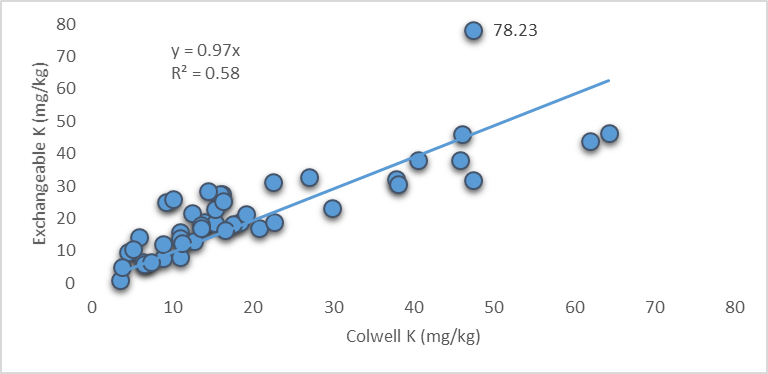December 1, 2017
APAL has joined with Summit Field Research and Summit Fertilizers to run a test in Western Australia which is investigating the conventional wisdom on soil test methods for postassium (K).
While traditional methods have been providing valuable information on some soil types, there is growing concern that in some soil types and circumstances these methods are providing questionable recommendations for the economic use of K fertilisers.
Our largest data set of field trials (BFDC) doesn’t allow for a comparative analysis between the performance of soil K tests. In fact, it is becoming increasing evident that within the critical range of the Colwell K and Exchangeable K, the relationship is not 1 to 1.
The trial site will investigate the performance of several potassium existing and new methods against crop response to applied K across several years. It is hoped this will increase the confidence of advisers and growers to provide improved guidelines to manage and profit from their K inputs.
The methods being used are Colwell K (Bicarbonate), Exchangeable K (Ammonium Acetate), Exchangeable K (Ammonium Chloride/Barium Chloride) and DGT K (Diffusive Gradient Thin-Films).
Original site soil test data
The trial site was characterised before sowing for K applications by taking samples to depth in each of the trial replicates. Soil test results suggest the site should be responsive to an application of K as most of the samples fell below established critical values (40-50 mg/kg – Colwell K, BFDC).
This dataset confirms the variability between Colwell K and Exchangeable K with an R2 = 0.58 (Figure 1)

Figure 1: Initial soil test data comparing Colwell K and Exchangeable K methods. Variability was seen from 5 mg/kg to 65 mg/kg. Samples taken down to 50cm in 10cm increments.
The plan
To determine the critical soil K test level which is usually achieved by accumulating several field trials, we manipulated soil K levels in this current year by applying several different K rates to produce various soil K levels. This will enable us to provide guidelines at which K level (mg/kg) our single site becomes non-responsive. (Figure 2)

Figure 2: Standard rate response concept to provide interpretation or critical levels. Critical value identified at 90% relative yield.
The trial

Figure 3: The trial plan outlines eight (8) treatments by five (5) replicates. The product was banded at seeding. Extra K in the form of MOP was blended in treatments 3-8. Extra K was then added and incorporated before sowing and spreading post-emergent.
Initial results
Soil K manipulation was successful! Due to seasonal conditions we have sampled 0-10 cm for each plot. Our future plans are to sample all depths and examine the movement of K through the profile.

Figure 4: Soil sampling in 0-10cm eight weeks post treatments. Soil K levels have risen to greater than 220mg/kg in the highest treatment.
We will provide you with further updates as we progress work on this trial.
Next Post
Next Post